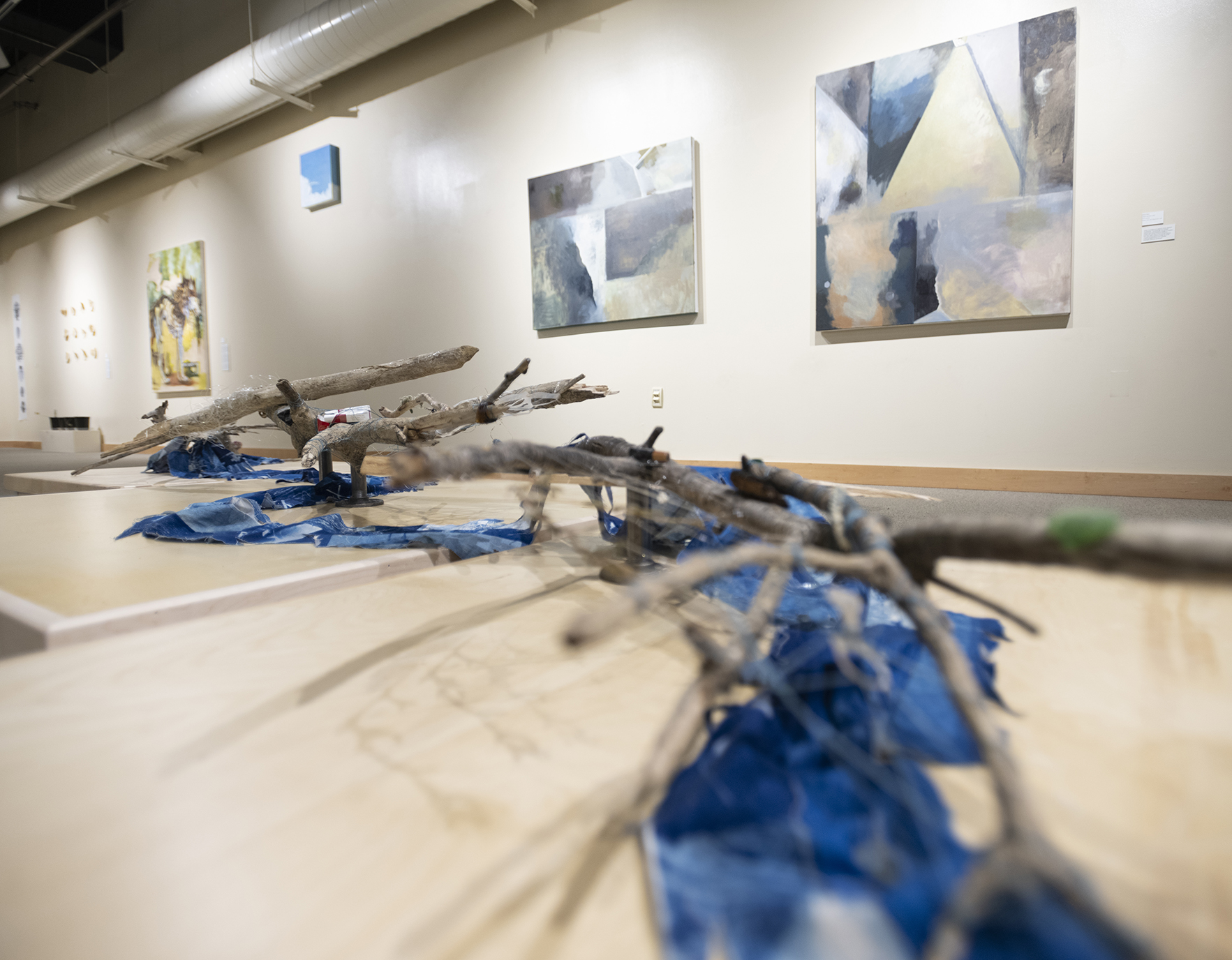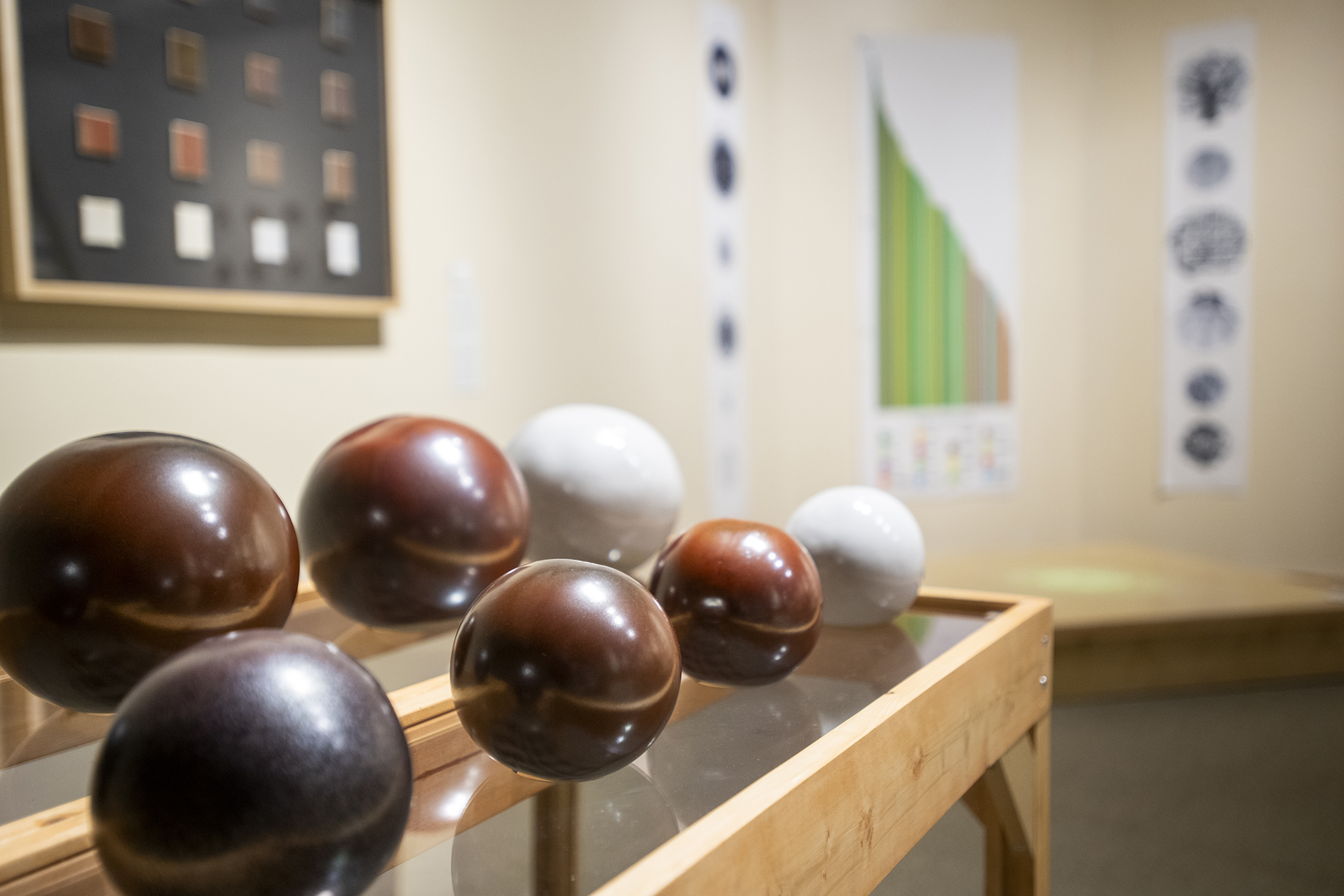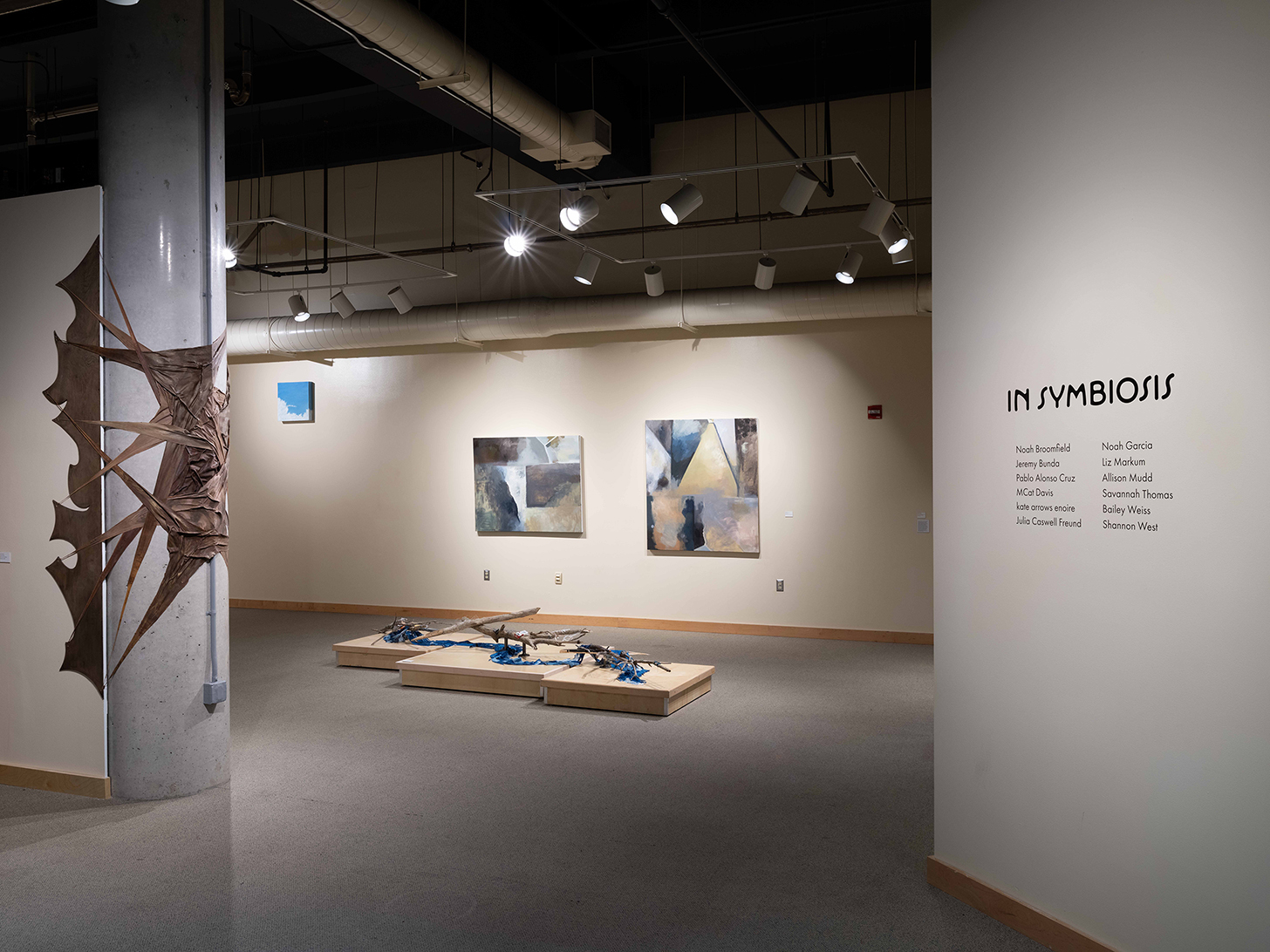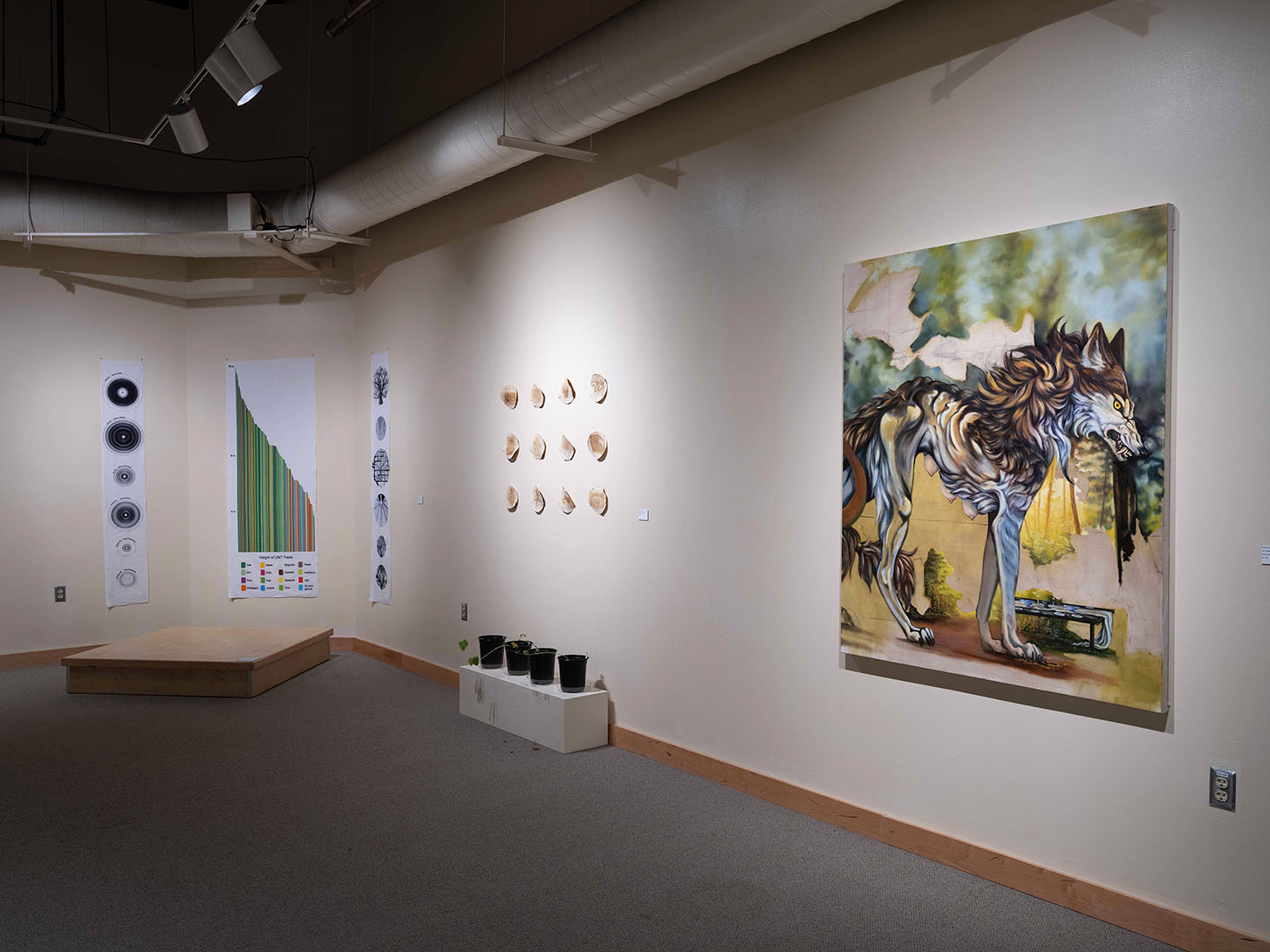
BY LISA SCIORTINO
A group comprised largely of graduate students from the UNT College of Visual Arts and Design’s Department of Studio Art used scientific research as a muse for their latest artworks.
Some of the students paired with other graduate students and faculty from across the university to learn more about their research and use it as inspiration for a variety of art — including photography, sculpture and even performance art, among other mediums.
The project was the crux of Dornith Doherty’s Art and the Environment, a studio art special topics course this fall that challenged students to develop creative, critical and conceptual ways of thinking in their art practice.
“Scientific research needs to be somehow synthesized and explained in different ways,” Doherty says. “What art does — through metaphor and the poetry and beauty of the visual image — is it allows people to ask questions, engage and come at the topic from a different direction.”
Students displayed their work recently as part of the exhibition “In Symbiosis” at the Elm Fork Education Center’s Eagle Exhibit Hall in UNT’s Environmental Sciences Building.
For his ceramics piece, titled “LC 50,” M.F.A. candidate Noah Broomfield teamed with fellow graduate student and teaching assistant Cameron Emadi in associate professor Ed Mager’s environmental science lab.

Broomfield learned about research Emadi has conducted on the effects of increased toxins and decreased oxygen levels in the aquatic environments of Daphnia Magna, a small, round planktonic crustacean. In response to the lack of oxygen, the organism produces hemoglobin, which causes it to appear red in color.
“LC 50” refers to the “lethal concentration” of a chemical in the air or water for 50 percent of a population.
Similar chemical and physical reactions occur when clay is introduced to the high temperatures of a kiln and transformed into ceramic.
“When I saw that this organism responded by becoming red, I thought, `That’s unique and interesting and it connects what Cameron’s doing in the lab to what I’m studying in my lab,’” Broomfield says.
The heat in the kiln pulls oxygen from clay and heavy metals such as iron from its glaze particles. This results in a variety of textures and red hues on the piece.
Broomfield created 16 clay orbs of increasing size to represent the Daphnia Magna’s roughly 40-day lifespan. Using a specialized kiln, he subjected the pieces to varying levels of iron and oxygen during the firing process.
The resulting artwork showed “some really interesting, dramatic leaps between the concentrations and made different colors and textures on these orbs,” he says, comparing it to a scientific bar graph that illustrates the effects of the decreased oxygen levels in the Daphnia Magna.
However, the class project did not intend for artists to translate scientific research data in a straightforward manner.
“It’s much more like poetry where its open-ended,” Doherty says. “There are elements that come together that spark an idea in you that creates a conversation. Many times, its more ephemeral.”



